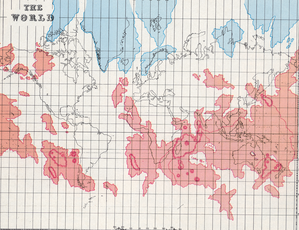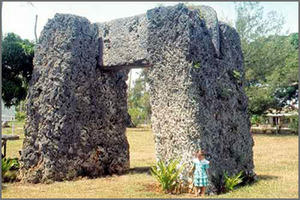With this study of Atlantis we will come to see that in ancient times its oral tradition was transmitted from initiate to initiate so that human knowledge is not lost. This would tend to prove, if need be, that the priests were custodians of knowledge and that they only imparted it to those who had proven their integrity. As we have said, we are going to embark on a quick journey to search for papyri dealing with Atlantis. In remote times, the peoples of the Mediterranean had kept alive the memory of a disaster that destroyed a great civilization.
The civilizations of the Mediterranean: Egypt
The ancient Egyptians, with their civilization, have left us some remarkable testimonies. We have discovered only a part of their spiritual wealth, and archaeologists will, in time, move the sand to uncover some fabulous stories. A 3000 year old papyrus of the Thirteenth Dynasty kept at the Hermitage in Leningrad says:
Once you leave the Island of the Serpent, you will find it no more, because this land will disappear in the waters of the sea… A star once fell from heaven and the flames consumed everything. All perished and only I survived. But when I saw the mountain of bodies piled up, I almost died of grief in my turn.
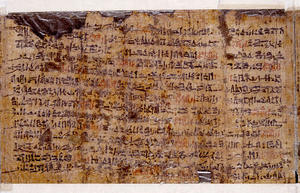 Here is an indication of the circumstances that caused the Flood: a star fell from heaven … We will return later to this aspect with the latest scientific findings on Atlantis that precisely demonstrate that about 10,000 years ago, an asteroid, fragment of a planet coursing through space, crashed on our planet causing severe damages. The epitaphs of Ramses III and Seti I give some interesting explanations on the Flood as viewed by the Egyptians. This happened, they say, when Re became old, He, the self created god… the king of men and gods. Men started making big palavers against him. His Majesty heard the palavers of men and said:
Here is an indication of the circumstances that caused the Flood: a star fell from heaven … We will return later to this aspect with the latest scientific findings on Atlantis that precisely demonstrate that about 10,000 years ago, an asteroid, fragment of a planet coursing through space, crashed on our planet causing severe damages. The epitaphs of Ramses III and Seti I give some interesting explanations on the Flood as viewed by the Egyptians. This happened, they say, when Re became old, He, the self created god… the king of men and gods. Men started making big palavers against him. His Majesty heard the palavers of men and said:
Look at men, they have hatched plans against me. Say what you will do about this: Re said “See, they flee in the desert” The gods said to his Majesty: “Send your eye and inflict a disaster upon the rebels. Do not leave your eye on your forehead. Let it descend in the form of Hathor…”
This text, called “The Heavenly Cow”, is very interesting and offers some surprising facts to the reader’s sagacity (we can put a photo online if the readers wish so). Note, however, that the ancient Egyptians, by culture, often garnered in one allegorical narrative historical events from different times that are linked by their symbolic meaning. Thus, with this text, we not only have a brief explanation of the fall of man, but also that of Atlantis. Indeed, in the tradition, the eye in question, and which becomes the goddess Hathor, conceals a great truth, that of the birth of life, which we can also call the GRAIL.
A blazing star
But for what concerns us here we have a very simple explanation of the destruction of the land: the eye that causes a disaster can be seen as a huge meteorite which, besides, is confirmed by the presence of the goddess Hathor. She was considered a sky-goddess bearing several epithets including “The Flaming One”, that is, She who devours with the force of fire. This brings us to the fabled aerolith with its mane of fire, a phenomenon that happens to any object that comes in contact with the atmosphere by the process of heating of the mass due to its high speed. The Leiden papyrus 1384 continues in the same direction and we can read:
Sekhmet took the beautiful appearance of a raging lioness. She launched her mane forward, her coat blazed, her spine was of the color of the blood, and her eyes cast flames and shone like the sun at midday… All around trembled before her might. Her tail raised the dust of the desert … At the breath from her nostrils, the trees withered in the woods … At the same time, the desert was covered with a veil, mountains veered to black, the sun darkened and one ceased seeing the sky.
The Leyden papyrus is very interesting because it gives us more details on the disaster. Indeed, the goddess Sekhmet was often associated with the goddess Hathor. We will not go into details over her “blazing coat”, “her nostrils and her breath”, etc… However, we insist on her flames glowing like “the sun at midday”.
We reach here Plato’s account, which said that “everything was submerged in a single dreadful night.” This is true with the Leyden Papyrus, since we see the flames of the “raging lioness that glowed like the sun at midday.” This point deserves to be emphasized because it allows us, by correlation, to draw some conclusions about the time the disaster took place. Papyri found on Egyptian mummies by Arab archaeologists also have some remarkable episodes:
In that time – say the texts of Saurid Salhuuk, son of the king of Egypt – he saw in a dream a huge planet that fell to earth in a terrible crash causing darkness. Decimated populations had nowhere to flee to avoid the falling stones and the foul hot water that accompanied the disaster.
We will return later to the consequences of the disaster by giving some precisions about the “foul hot water” and other similar phenomena. Let us now leave the Egyptian civilization. We could go further with the explanation of some historical facts, cite other texts, but this is not our goal here, as you know.
Some may ba surprised at how much Antiquity, with its manuscripts and stone tablets, spoke of Atlantis. In fact, the disaster was so extensive that it changed the behavior of the inhabitants of the planet. Most affected were the inhabitants of the Mediterranean basin, since some lands were flooded during the collapse of Atlantis.
To the country of Gilgamesh
Let us now head for Chaldea and Babylon … A number of ancient scholars were interested in the sunken continent. The writings of Srabon, Iamblichus, Plutarch, Homer, Livy, and Quinte Turce offer interesting thoughts on this. But in addition to those writings we have documents found in various parts of the world which, together, imbricate perfectly like the pieces of a puzzle. Suffice it for now to find these texts, these legends, from around the Mediterranean Basin.
The great cities of the past had always had a connection with the great conquerors who obtained their secret knowledge from this ancient civilization. According to Eupolemus (second century B.C.), the city of Babylon owes its origin to the men who escaped the Flood. The kings of Sumer were considered their descendants, sent by the gods to rehabilitate the human race. The first of these kings, Dungi, was the child of the goddess Ninsun. Berosus, the Chaldean priest, whom we previously mentioned, goes further in this direction by presenting the god Oannes and his companions emerging from the depths of the Persian Gulf to come teach humans after the Flood. Berosus said that he taught men all that helped to soften their manners and humanize their lives. These godly initiators can only be compared to the Atlanteans, fathers of the Western civilizations. The Epic of Gilgamesh, a 4000 year old epic song, is very interesting to note because it describes the effects of the disaster:
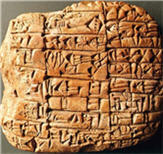 The day came when the rulers of darkness caused a horrible rain to fall. I looked at the time, it was appalling to consider… When morning came, clouds as dark as a raven rose up on the horizon. Any brightness turned into darkness. The storm howled in the south, the waters roared, and having already reached the mountain they poured upon the people … for six days and six nights the rain rumbled like a torrent, and on the seventh day the storm ceased. There was a silence like after a battle. The sea calmed. All that was left of men was mud…
The day came when the rulers of darkness caused a horrible rain to fall. I looked at the time, it was appalling to consider… When morning came, clouds as dark as a raven rose up on the horizon. Any brightness turned into darkness. The storm howled in the south, the waters roared, and having already reached the mountain they poured upon the people … for six days and six nights the rain rumbled like a torrent, and on the seventh day the storm ceased. There was a silence like after a battle. The sea calmed. All that was left of men was mud…
In the epic, this song is put in the mouth Utnapishim, the Sumerian Noah, the great-grandfather of Gilgamesh. Otto Munk, a specialist on Atlantis, says about this song:
This story has long been ridiculed as a fable, a myth, or at best an essay about a small local disaster, until Leonard Wooley and his team, during excavations at Ur-Warka, in 1928, came across an undeniable vestige of what was believed to be a legendary tidal wave: a layer of alluvial mud, 2.50 m thick and 12m below ground level under the royal tombs of the early Sumerian period. This was indeed a proof that there was a great flood.
Chaldean traditions report interesting “legends”, so named by today’s rationalist minds who, besides, are realizing more and more the reality of these myths and legends, and one of these tallies quite well with the Bible. King Xisuthrus is warned by the god Chronos that the flood is impending. The Sovereign buries “the writings that tells of the beginning, the middle and end of all things” in Sisparis, the city of the sun; and he his court take refuge on a vessel that lands in Armenia like the arch, but on Mount Korkoura.
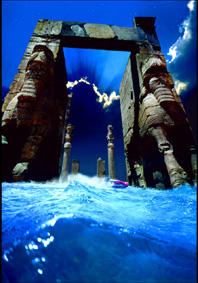 As we know, the Earth has experienced several floods and some more extensive than the one that sank Atlantis. Besides, according to the ancient texts, what we have seen and the latest discoveries in the Atlantic Ocean, it was not a deluge that destroyed Atlantis but the fall on this continent of a planetoid that would have caused a gigantic tidal wave accompanied by phenomena in series. Comparisons and quotes abound, giving the necessary pieces of information and similarities needed to demonstrate the existence of Atlantis.
As we know, the Earth has experienced several floods and some more extensive than the one that sank Atlantis. Besides, according to the ancient texts, what we have seen and the latest discoveries in the Atlantic Ocean, it was not a deluge that destroyed Atlantis but the fall on this continent of a planetoid that would have caused a gigantic tidal wave accompanied by phenomena in series. Comparisons and quotes abound, giving the necessary pieces of information and similarities needed to demonstrate the existence of Atlantis.
Andrew Thomas, in his book “Atlantis, From Legends to Discovery”, presents a curious tradition that existed amongst the ancients. It was “Lucinius” who, eighteen centuries ago, reported a very curious anecdote that illustrates the survival in the ancient world of the memory of the Flood. The priests of Baalbeck (now in Lebanon) used to pour seawater, drawn from the Mediterranean, into the crevice of a rock close to the Temple in order to perpetuate the memory of the waters of the Flood that engulfed it. Also, the ceremony was to commemorate the salvation of Deucalion. To procure this water, the priests had to march for four days to the shores of the sea and all the way back to Baalbeck.
To conclude on the Mediterranean civilizations, before returning to a more distant past, we could not ignore, besides the texts of Plato, what is said in Greek mythology about Atlantis. This is what we will consider in the next section.


